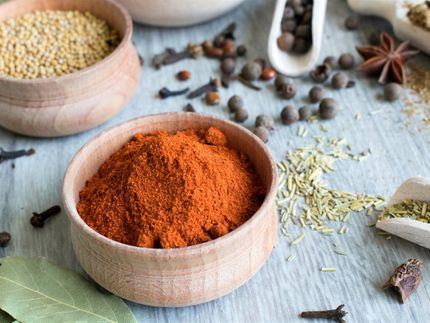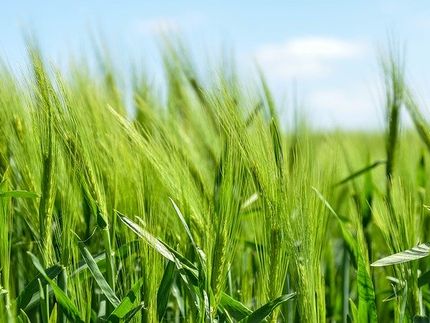SADHANA FOOD “Too many people accept to do big things, too little can be contented to do simple daily things” Mother Theresa
Doing Sadhana food means putting in place a routine for cooking at regular times every day. It is thinking with joy about what to eat and where to buy the ingredients. It should be an inspiring and a creative time, giving you a rewarding feeling of sharing all your love with your family and loved ones. It doesn’t have to be complicated, quite the opposite in fact, the simpler the tastier! To illustrate it I will give you a few basic ayurvedic recipes to achieve two things at the same time; cooking and playing with flavours and textures as well as creating healthy and cleansing dishes. Not only will you gain a calmer mood, a better digestive system in general, but you will be happy with less pain in your body, sleeping better and feeling less tired. What is it this miraculous food? It is simply having a balanced diet to control acidity. Acidity in your body can be at the origin of chronic pain as well as rheumatism, gut problems, arthritis, tooth decay, osteoporosis, kidney stones, varicose veins, stomach acidity, headaches and more.
The roots are in our food and drinks. Acidity is very abrasive and corrosive and irritates and damages the tissues of our organs. Of course we need a certain level of acidity which is eliminated naturally by the body but above that level it attacks the intestines which become porous and will let the microbes go through the blood. This is the leaking guts which leads to a lack of minerals. There are foods to avoid such as ready prepared food, all white ingredients, industrial food.
To maintain and master a good healthy diet prioritise organic and local products, have a varied diet with a bit of everything in small quantities.
REMEMBER there is nothing bad, only bad combinations of food and the wrong type of ingredients for your constitution at the wrong time of day and the wrong season. This can damage your digestive system and create “Ama” (toxins). All the dark green leaves, kale, spinach, cabbage, broccoli as well as sesame, chia and quinoa eliminate the acidity.
REMEMBER everything in small quantities, vary your menu in order to balance your diet. Other beneficial foods which can be added include:
-sauerkraut, buckwheat, natto for your Vitamin K2 - almonds, nuts and all vegetables for your magnesium and calcium
- Beans, dates, prunes, raisins, beetroots for your boric acid, Kombu seaweed (iodium), raw chocolate, cider, vinegar, tumeric and black pepper.
The Kitcharis are great dishes for detoxifying and cleansing. Learn and experiment with the basic Kitcharis, master the few recipes given on the recipes page and then you will adapt them to the needs of your constitution which vary with the seasons and your environment.
“The Pharmacy is the Kitchen, the Food (Ahara) is the Medicine” “GRATITUDE TOWARDS FOOD” bring all your love in your cooking and share food with a lot of joy!
Ayurvedic qualities of spices & flavours for our well-being
“The essence of all beings is Earth. The essence of the Earth is Water. The essence of Water is plants. The essence of plants is the Human Being.” Chandogya Upanishad.
We can’t talk about our health without taking on board our environment. We have to understand the importance of the 5 elements (Panchamahabhuta) which are the constitution of the natural world, our body and mind. We should constantly be aware of Nature and our ecosystem as we are all interconnected. It helps to create an inclusive attitude to life. We need to nurture this field if we are to be nourished enough to experience a spiritual dimension to our life.
Understanding taste
There are 6 tastes (Sweet, Acid, Salty, Pungent, Bitter and Astringent), in Sanskrit taste is called RASA.
Food’s rasa is not static and changes depending on how it has been harvested, stored and cooked (eg. garlic is pungent raw but sweet when cooked).
Flavours are the essence of life so taste affects everything in our life (sweetness brings happiness) we experience it on 3 levels Physical, Emotional and Mental.
Emotions are linked to the flavours and have an impact on our digestive system which is related to our constitution and state of health. It is the reason why learning about taste is essential to understand its effects.
You can enter another layer of discovery about life. “It is not what you eat which counts, it is what you digest”. The best Ingredients can become your own poison if you can’t digest them. Digestion is the origin of all diseases. The usage of spices will balance the needs of your doshas and help the metabolism to digest and nourish all the Dhatus (tissues).
The Nervous system and Endocrine system also control the digestion. So it is important to take the following factors into account:
What you think about the food - you should love your food from preparation to the digestion.
Where you eat - not in front of TV or at the office
With whom - in good company, avoid being angry
Seasons and location - should be adapted to the weather etc.
Exercise - to help the nutrients circulate through the body.
Ayurveda doesn't talk about carbs but classifies food by nutrition value & time to digest. All factors should be taken on board.
Common sense would avoid an “Incorrect usage of Intelligence” which is an offence to WISDOM and would act with discrimination. Agni is our biological fire which drives our metabolism. For example average digestion takes between 12 to 48 hours but in general it is much less for a vegetarian than a meat eater. The entire process of nutrition takes between 35-45 days to nourish all the dhatus (Blood, nerves, bones, nails tissues, etc).
The benefits of any changes in a diet require patience and perseverance to be noticeable. It is a long term programme not a quick fix temporary solution.
"RASA" the Flavours & the Emotions Ayurvedic Spices are used to facilitate the digestion. The 6 flavours found in the spices are needed for improving the process of digestion and assimilation of the food. This is called AGNI.
Agni gives indications of the imbalanced doshas called Vikriti. It is observed and discussed during consultation.
If there is stagnation there will be toxins in the tissues which affect the mind and the body. “Ama”, or toxins, are at the origin of most diseases.
Looking after your immune system is looking after your ability to digest! It is treating the roots of the disease not the symptoms. It requires defining which doshas are imbalanced and to take the right spices. Observing faeces also indicates the state of the mind as well as your digestion disorders.
The seasons also have to be taken into account as well as your lifestyle, diet and mental state.
RASA the 6 flavours in the food are linked to the 9 Rasa of the emotions, in Sanskrit emotion and flavour are the same word RASA.
The food affects our emotions and our mind. In turn our emotions are also attracted by certain types of food. The psychology and the chemistry of the flavours have to be combined with subtlety to detoxify, nourish and balance our state of mind.
How to balance your Agni? It would be explained to you during a consultation. Advice is provided for diet, dinacharya, abhyanga. A personal sequence of Yoga asanas will be given, adapted to your needs.
Spices for herbal teas to regulate Agni:
VATA ¼ Cardamom ¼ Cumin ¼ Fennel 1 cup of warm water. Before meals to impact on the colon - Improve Vishama agni
PITTA ¼ Cumin ¼ Coriander ¼ Fennel 1 cup of warm water. During meals to impact on the intestines - Regulate Tiksna agni
KAPHA ¼ dry Ginger ¼ Cumin ¼ Fenugreek seed 1 cup of warm water. Before, after and during meals to impact on the stomach - Stimulate Manda agni
During the consultation and follow ups all will be explained to you. With patience and perseverance, time will help you to develop an understanding of the impact of the spices and to observe what your agni is telling you.
“Prevention is better than cure” Ayurveda is the Science of Prevention and Self-healing.
Ayurveda classifies in 6 stages the development of disease caused by imbalanced doshas.
It happens gradually. It starts by accumulating symptoms and giving “warnings”.
Then it is an aggravated stage showing symptoms followed by the spreading phase reaching the tissues, organs etc.
Finally, the disease is installed and it will be more difficult to cure.
A few golden rules; a simple life-style with solid routines is not a cure but a part of the foundation in Ayurveda to re-establish the normal rhythm of the process of health.
Lifestyle and diet need to be adjusted according to the environment and seasons in order to respect and follow the movement of the doshas.
Fasting is a great opportunity to observe your feelings, senses and emotions. VATA ½ day PITTA 1 day KAPHA 3 days
Intermittent fasting for at least 12 hours, is a great way to put at rest your digestive system and refresh your energy.
A very reasonable approach should be taken with no frustration to get all its benefits.
Start with a weekly intermittent fast. Here are a few suggestions:
-Stop eating after lunch or 4pm after a snack
-Eat at lunch the following day
-Stop eating after an early light dinner.
-Eat at lunch the following day
And at each change of season practice :
Cleaning the lungs (because mucus accumulates) and the colon & the liver Milk Thistle (Sillibum Marianum) tincture of the seeds, 40 drops 3 x a day, could help for the liver. (I recommend videos by Christophe Bernard for French speakers)




